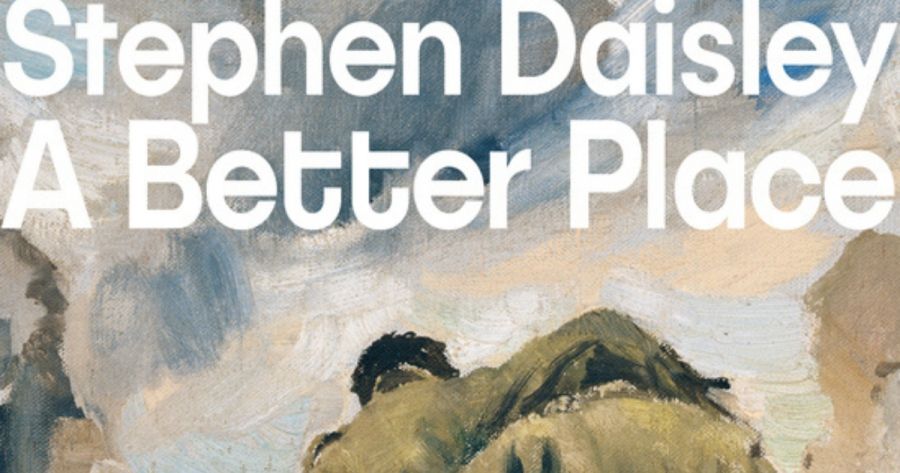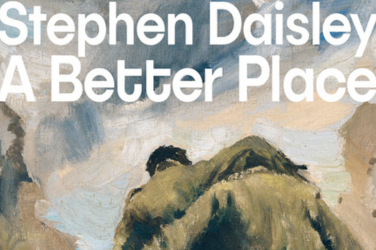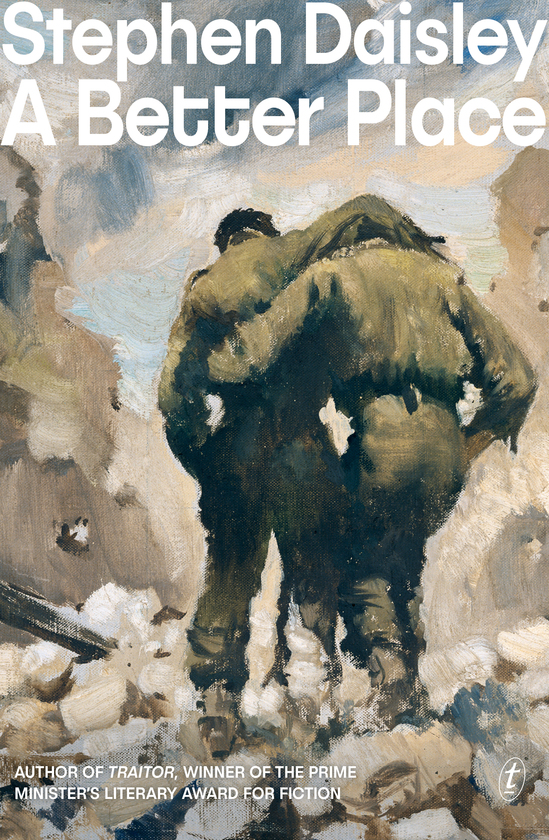
- Free Article: No
- Contents Category: Fiction
- Review Article: Yes
- Article Title: Unsolved jigsaw puzzle
- Article Subtitle: On tenderness and brutality
- Online Only: No
- Custom Highlight Text:
Early in Stephen Daisley’s novel about World War II and postwar years, A Better Place, a New Zealand soldier called Roy Mitchell tells a lieutenant they must do something terrible: ‘C’mon boss, we got no choice here.’ This sentiment of compulsion – and this acceptance of the unacceptable – is symptomatic of many of the circumstances Roy endures and of the way he fights, survives, and keeps going across several theatres of war and into the peaceful future he must navigate with his head full of memories.
- Featured Image (400px * 250px):

- Alt Tag (Featured Image): Patrick Allington reviews 'A Better Place' by Stephen Daisley
- Book 1 Title: A Better Place
- Book 1 Biblio: Text Publishing, $32.99 pb, 260 pp
- Book 1 Cover Small (400 x 600):

- Book 1 Cover (800 x 1200):

A Better Place dwells on botched or senseless counter-attacks and rushed retreats; the drudgery of soldiers waiting for something to happen; the challenges of finding food in wartime; the lewdness and, sometimes, the sexual violence of men; and the prevalence of dysentery and the solace of diarrhoea jokes. At times, Daisley dwells on moments, actions, or thoughts in acute detail, slowing time in a way that recalls Steven Carroll’s fictional accounts of suburban Melbourne. Daisley does not equivocate about revealing the flaws of the New Zealanders. Bill, for example, routinely steals food from civilians, and Manny behaves malevolently towards women. He is also contemptuous of fellow soldier David, who is known as Sister and is close with Tony. Daisley shows restraint by making no attempt to diagnose or interpret men behaving badly: the narrative neither absolves nor condemns them.
Daisley firmly tells readers that ‘[t]his is a work of fiction. Of my imagination.’ The disclaimer is welcome – for a reader to judge A Better Place by its historical and cultural accuracy would be a thoroughly uninteresting way to appreciate its qualities. Still, the novel adopts a realist tone to describe military processes, the day-to-day existence of the soldiers, and specific events, including historical battles. This realist tone provides a foundation for Daisley to depict, in graphic and exacting detail, the impact of war violence upon individual humans.
Daisley’s depiction of a battle in the village of Gravzano di Lucia – New Zealanders fighting Germans among Italian civilians – is a shocking passage of sustained brilliance and depth. Manny is central to the action, behaving thoroughly out of character. But later, ‘If anyone asked him, he would say no. I don’t remember that.’
Several other battles scenes, though also startling and compelling, are slightly burdened by the multiple layers of action and meaning they tackle: the heat of battle; the unsparing depictions of the injuries and deaths of soldiers, some of whom readers know and some of whom they do not; the sometimes heroic, sometimes deeply questionable, sometimes inexplicable, sometimes calm, sometimes panicked actions of combatants on both sides; and the facts, legacy, and sweeping nature of the historical and political context of World War II.
As with Daisley’s novel Traitor (Text, 2010) – set in Gallipoli and New Zealand, and winner of the Prime Minister’s Literary Award for fiction – the story is more compelling for its engagement with the actions and emotions of the characters than for its examination of the historical facts of war. As in Traitor, tenderness and brutality collide repeatedly. A Better Place allows readers to ponder how Roy, Tony, and others – both their New Zealand compatriots and other allies, but also the German and Italian fighters – handle, or do not handle, everything they see, do, and experience during battle. It considers the delicate love and bond of the two brothers, who are very different people. Perhaps most of all, it dwells on the interplay between New Zealanders on the global stage and the farming district and family life the brothers hail from: no electricity in their childhood home; a father deeply damaged by his World War I service; and a mother who leaves when the boys are fourteen.
As the war ends, Roy is a still-young man of whom far too much has been asked. He returns to New Zealand preparing to make a life for himself on the land, but guilt-ridden for having left Tony dead in Crete. He is a practical man, a hard and resourceful worker, a lover of dogs, and a deep thinker in his way. It is to Daisley’s credit that he does not ‘solve’ Roy as if he were a jigsaw puzzle. At the end of the war, readers understand a great deal about Roy, having glimpsed second-hand what he has experienced. But he is still a person whose essence is obscured, standing half in shadow as he surveys his patch of land, buys a dog, and prepares for civilian life.
A Better Place opens with a short portrait of Roy as an ‘old shepherd’ aged seventy-eight: ‘People in the district would often say he was not quite the same after he came back from the war.’ Daisley leaves it to readers, should we wish to do so, to speculate about Roy’s life in the years from his immediate postwar return to New Zealand, when the world as he understood it had changed in multiple ways, to the old Roy as an undefined oddity in his district, an anachronism living on the cusp of the twenty-first century.


Comments powered by CComment